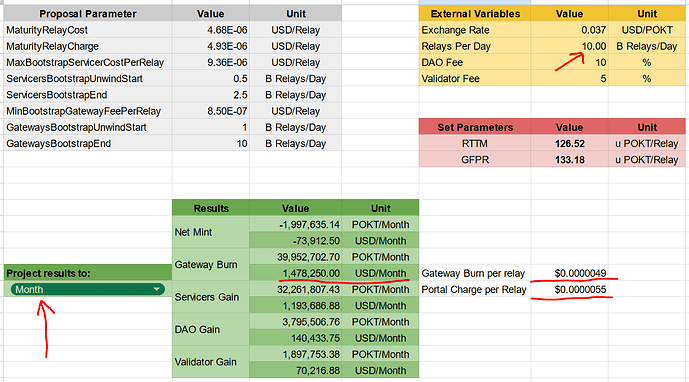Thank-you @RawthiL for the model you provided! MINT - Calculate RTTM and GFPR - Google Sheets
While I don’t fully understand all the calculations behind each variable, this gives us a chance to see what the effect would be in different scenarios. I understand that sometimes a model can’t have simplified math, so having the math in an expressive form that shows the effects, is key. Much thanks ![]()
From my initial glance, I love the concept of allowing growth in node rewards in accordance to relays. That was the intended design of POKT from the begining, and I don’t think any ecosystem can function in the long term without a common incentive… which for POKT should be driving relays.
However, I don’t see how this model will work. When I set the Projected Results to Month, set the Relays Per Day to 10B, the Gateway Burn is $1.4M+ a month. I added a few extra field to show the actual cost per relay, and as you can see, it’s only a few digits from what the Portal charges their customer per relay. With this high of a burn rate, gateways would have to increase their prices to Infura level prices… eating away the primary advantage of POKT, cheaper relays.
A gateway like Nodies already has infra that is supplemented by POKT rewards… so why would they use POKT at all, especially if the burn cost is that high?
It would also be significantly cheaper for gateways to just run their own infra instead of the $1.4M+ a month charge. I can’t see how that would work.
While I love the concept, but I don’t see how this high of a fee is possible at this time.
However, I’m not sold that we have to cut everything down to be deflationary at 10B a day. I’m not sold that it is the golden bullet to start us down the right path. I’ve maintained that I believe the greatest value to the ecosystem would be something that encourages folks to lock up POKT, in either staking or some other mechanism.
